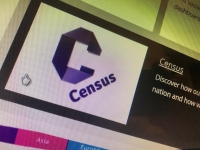Cirrus
Inside Public Sector Recruitment : From Tender to Talent

Hiring in the public sector comes with its own unique challenges. Between frameworks, compliance requirements, and multiple layers of governance, getting the right person into the right role isn’t always straightforward.
That’s why the difference between a good recruitment agency and a great one is rarely about ticking procedural boxes. It’s about how well they understand the system, how quickly they can move within it, and how effectively they can align recruitment with real-world outcomes.
Here’s a look at what that difference really looks like across each stage of the process.
Stage 1: Getting onto Frameworks
Frameworks are essential to public sector hiring. They allow organisations to work with pre-approved suppliers who meet defined standards, without needing to run a full procurement each time. But getting onto a framework is no small task. It requires financial transparency, evidence of service delivery, and increasingly, clear commitments to social value, diversity, and sustainability.
What sets great agencies apart here is the depth of preparation. They don’t just meet the requirements, they build their delivery models around them — ensuring the standards are more than just compliance, but embedded into every part of their recruitment process.
Stage 2: Receiving Role Briefs
Once a supplier is on a framework, they begin to receive role requests directly — often before roles go to market. At this stage, it's not just about what's written in the brief. It's about reading between the lines and understanding the transformation behind the role title.
Great agencies know how to ask the right questions. They understand the difference between needing someone to "lead" and someone to "fix." They spot where a role requires deep sector knowledge, or where a fresh external perspective could make all the difference. And when urgency hits, they’re ready — not scrambling.
Stage 3: Sourcing the Right Talent
Public sector roles often demand a blend of rare skills, relevant experience, and the ability to operate in complex, highly structured environments. Some require clearance, others need niche technical capabilities, and most come with tight budget parameters.
The agencies that consistently deliver in this space do more than just search a database. They cultivate trusted talent pools over time. They stay close to their networks. And they headhunt with precision when the brief calls for it. Most importantly, they understand that success isn’t just about a CV match — it’s about cultural fit, resilience, and the ability to navigate public sector challenges.
Stage 4: Compliance and Vetting
This is often where momentum is lost. Vetting processes in the public sector can be extensive, covering DBS, BPSS, SC or DV clearance, references, and qualification checks. When managed poorly, these steps slow everything down.
What makes a difference is anticipation. Great agencies don’t wait until the offer stage to begin compliance. They run processes in parallel, gather documentation early, and keep all parties informed. The result is a smoother, faster route to onboarding — without cutting corners.
Stage 5: Placement and Onboarding
Getting someone into post isn't just about finalising paperwork. There are stakeholders to coordinate, expectations to align, and organisational cultures to prepare for.
This is where recruitment becomes more than just logistics. The best agencies act as partners — guiding candidates through onboarding, managing communication between teams, and ensuring that when someone starts, they’re ready to deliver from day one.
Bringing It All Together
At a glance, the process seems linear: Tender → Role Request → Sourcing → Compliance → Placement. But in practice, it’s anything but simple.
The agencies that stand out are the ones that bring agility, experience, and insight to every stage. They’re responsive without being reactive. They understand the system, but never lose sight of the people within it. And they focus on outcomes, not just activity.
That’s the approach Malikshaw brings to public sector recruitment. After two decades supporting transformation across central and local government, health, justice, and beyond, we’ve learned how to make the frameworks work — not just for hiring managers, but for the people delivering change on the ground.
If you're looking for a partner who understands how to turn process into progress, we’d be happy to talk.
Mission Critical Teams: The Talent Mix for Secure Delivery

Big public sector programmes are under huge pressure. In defence, national security, and central government, transformation isn’t a nice-to-have. It’s urgent, complex, and constantly under the microscope. Whether you’re leading digital modernisation, strengthening cyber resilience or overhauling outdated systems, delivery depends on one thing: the team.
And not just any team. You need the right people, in the right roles, at the right time. Often, you also need them to hold the right security clearance—SC, DV or both. That’s where things start to get complicated.
There’s plenty of discussion about the best resourcing model for delivery. Some organisations try to build permanent teams from the outset. Others lean on contractors to move fast. Interims bring immediate leadership, particularly in challenging or unstable environments. And fractional experts offer focused senior support without the cost or commitment of a full-time hire.
In reality, successful programmes rarely rely on just one of these. The best results come from a carefully considered mix. A programme might start with a fractional CIO to set the vision and align stakeholders. As delivery ramps up, cleared contractors come in to build capability and execute fast. Then permanent hires are phased in to support continuity, governance and handover. The mix evolves alongside the programme’s needs.
But secure environments add another layer of complexity. Clearance can’t be an afterthought. It affects who you can hire, how fast they can start, and what roles they can take on. We’ve seen entire programmes grind to a halt because the team structure was sound on paper—but didn’t account for clearance availability or vetting timelines.
Here are some of the key challenges you could face when designing your talent mix in secure delivery:
• Clearance takes time. Vetting can stretch over months, delaying start dates.
• Not all skilled professionals hold active clearance, especially for DV.
• Clearance portability between departments or projects isn’t guaranteed.
• IR35 and compliance considerations affect contractor engagement.
• Permanent hires require long lead times for clearance and onboarding.
• Interim and fractional roles can provide fast, flexible leadership without full-time commitment.
• Contractors with clearance can accelerate delivery but need clear governance.
We’ve seen this play out in programmes like the MOD’s Digital Backbone initiative, which combined civil service governance, interim leadership, and SC-cleared delivery squads to maintain momentum and control. HMRC used a similar approach, bringing in interim leadership to stabilise a struggling programme and deploying cleared analysts to rebuild pace.
This is why working with a specialist transformation recruitment partner can make all the difference. A partner who understands the nuances of security clearance, government delivery, and transformation means you can design and deploy the right team from day one. Malikshaw combines deep experience with access to a network of vetted professionals across delivery, cyber, digital, and data roles. We also provide guidance on vetting timelines, IR35 compliance, and workforce transition planning to ensure your team is compliant, capable, and ready to deliver.
If you’re at the start of a new programme, or mid-flight and feeling the strain, now is the time to get your talent mix right. The earlier you involve a specialist partner, the smoother your delivery will be.
Learn more about our security clearance services here:
Or head straight to our contact page to book a strategy call:
Your programme is mission critical. Let’s make sure the team behind it is too.
Commercial Services Group
Commercial Services Group is ideally positioned to provide support and guidance on a range of business models across a variety of industry sectors.
The Power of the Pivot: Start-up meets Legacy

What Executive Teams Can Learn from Start-Up Thinking (Even in Legacy Organisations)
It’s easy to assume that start-up culture and legacy organisations live on opposite ends of the business spectrum. One moves fast and breaks things. The other follows process and protects reputation. But as more transformation projects stall, stretch or miss their targets, it’s worth asking: are we missing a trick?
Because when we talk to senior leaders in both public and private sectors, the appetite for change is clear. They know transformation isn’t optional anymore. It’s expected. What’s less clear is how to cut through the inertia that often surrounds large-scale change.
Here’s the good news. You don’t need to act like a start-up to think like one. And often, it’s executive teams who can lead the way by shifting how their organisations approach risk, delivery, and most importantly, people.
So, what does start-up thinking actually mean?
It’s not about beanbags or buzzwords. It’s a mindset. One that values agility over hierarchy, iteration over perfection, and rapid learning over drawn-out planning. Start-ups build quickly, test with real users, and adjust as they go. They get things wrong all the time, but they learn fast and get to what works faster.
For legacy organisations, especially those leading complex transformation programmes, there’s a lot to take from this.
The reality in most established organisations — whether that’s a government department or a decades-old FTSE company — is that change is hard. Bureaucracy, siloed teams, and a fear of failure can all slow things down. Add rigid hiring structures and cautious governance, and even the most well-funded transformation programmes can lose momentum.
Start-ups don’t have the luxury of slow. That’s why they rely on small, cross-functional teams. They launch minimum viable products instead of waiting for a polished final version. They keep customer feedback front and centre. And they allow teams to make decisions without waiting for layers of approval.
That may sound impossible in a large, risk-sensitive organisation, but it isn’t. We’ve seen public sector teams make it work. The UK’s Government Digital Service (GDS) is a great example. They changed how digital services are designed and delivered by introducing agile methods, bringing in digital and design talent from outside government, and making user needs the focus from day one.
We’ve seen this thinking in action in the private sector too. One of our clients, a traditional financial institution, launched an internal digital venture to compete with newer players. They gave the new team autonomy and hired talent from outside the banking sector. The result was a customer-first product delivered at start-up speed, but within the structure of a legacy organisation.
This isn’t about copying start-ups. It’s about adapting their mindset in a way that works for your organisation. That could mean giving teams more space to experiment. Or creating fast feedback loops so decisions are based on evidence, not assumptions. Or empowering leaders at all levels to act, not just escalate.
It also means rethinking how you bring people into your organisation. Start-ups thrive because they attract people who are comfortable with ambiguity, who move quickly, and who care deeply about solving problems. Legacy organisations can attract the same kind of talent — but it often requires a more flexible and strategic approach to hiring.
That’s where Malikshaw comes in.
We help organisations access the people who can drive transformation forward. From agile delivery managers and product leads to programme directors and digital specialists, we work with public and private sector clients to build teams that get results. Teams that bring in fresh thinking, challenge the status quo, and help legacy organisations move like modern ones.
If you're facing a big change programme or looking to inject new energy into your transformation team, let's talk. You don’t have to become a start-up to benefit from start-up thinking.
Need a partner who understands transformation and knows how to build the right team?
We’d love to help. Get in touch and let’s talk about what you’re building next.
Contact Malikshaw today.














